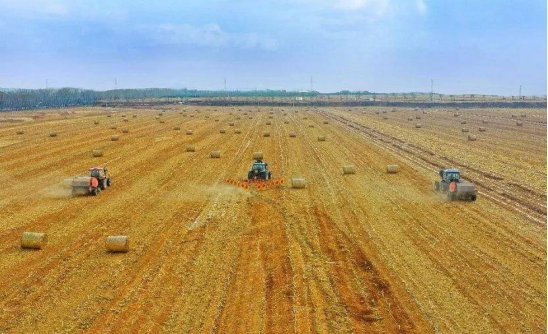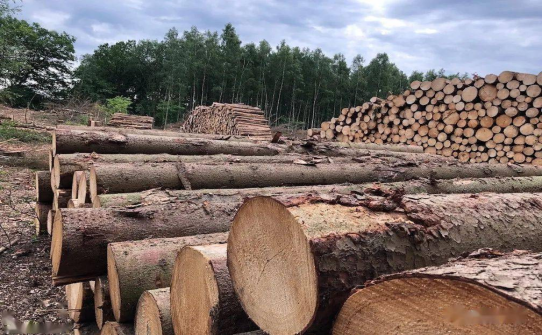The Impact of Regional Biomass Feedstock Diversity on the Layout of the Pellet Fuel Industry
Introduction
The global transition to sustainable energy has positioned biomass pellet fuel as a critical renewable resource. Central to this industry is the biomass pellet machine, which converts agricultural, forestry, and organic waste into high-density fuel. However, the geographic variability of biomass feedstocks—shaped by climate, soil, and land-use policies—profoundly influences the strategic placement of pellet production facilities. This article analyzes how regional feedstock differences drive industry dynamics and highlights the role of innovative machinery in adapting to these variations.

1. Regional Biomass Feedstock Variations and Industry Implications
North America: Abundance of Agricultural Residues
North America’s pellet industry thrives on corn stover, wheat straw, and forestry residues. The U.S. and Canada, with vast agricultural lands, prioritize cost-effective biomass pellet machines capable of processing high-volume, low-moisture feedstocks. Government incentives for bioenergy and carbon reduction further bolster production clusters in the Midwest and Pacific Northwest. However, competition with food crops and seasonal feedstock availability necessitate flexible machinery designs to handle diverse inputs.

Europe: Focus on Forestry and Sustainability
Europe leads in wood pellet production, driven by stringent sustainability mandates and carbon neutrality goals. Scandinavian countries utilize softwood residues, while Central Europe relies on hardwood byproducts. Advanced biomass pellet machines here emphasize energy efficiency and compatibility with mixed woody feedstocks. However, debates over biomass sourcing—such as the UK’s scrutiny of Drax’s supply chain—highlight risks of over-reliance on imported feedstocks.

Asia-Pacific: Diverse Feedstocks and Rapid Growth
In Asia, rice husks, bamboo, and palm kernel shells dominate. China and India, facing agricultural waste surpluses, are investing in decentralized pellet plants equipped with compact, multifunctional biomass pellet machines. For instance, China’s Territorial Spatial Planning policies prioritize land-use efficiency, encouraging pellet production near feedstock-rich rural areas. Meanwhile, Southeast Asia’s palm oil industry generates abundant biomass, though challenges like high moisture content require specialized drying technologies.

Africa and South America: Untapped Potential
Africa’s cassava peels and sugarcane bagasse remain underutilized due to fragmented supply chains. In Brazil, sugarcane residues fuel pellet exports, but infrastructure gaps limit scalability. Modular biomass pellet machines tailored for small-scale operations could unlock these regions’ potentia.

2. Strategic Industry Responses to Feedstock Diversity
Technological Adaptability: Pellet machine manufacturers, such as Bühler and ANDRITZ, now offer customizable solutions for varying feedstock densities and moisture levels. For example, vertical pellet machines excel with fibrous materials, while horizontal models handle harder woody biomass.
Policy-Driven Localization: Europe’s Renewable Energy Directive (RED III) mandates traceable biomass sourcing, pushing manufacturers to align with regional certification schemes. Similarly, China’s “Dual Carbon” goals prioritize localized production to reduce transport emissions.
Market Diversification: Companies like GEMCO and Shandong Bolida Machinery are expanding into emerging markets by offering affordable, low-maintenance machines suited to smallholder farmers.
3. Challenges and Future Trends
Feedstock Volatility: Climate change and land-use shifts threaten consistent biomass supply. Precision fertilization and agroforestry practices could stabilize yields.
Policy Risks: The UK’s recent audit of biomass sustainability certifications underscores the need for transparent supply chains.
Technological Innovation: Integrating AI and IoT into biomass pellet machines can optimize real-time adjustments for feedstock variability, reducing energy consumption by up to 20%.
Spotlight: Shandong Bolida Machinery Co., Ltd.
As a leading Chinese manufacturer of biomass pellet machines, Shandong Bolida Machinery specializes in vertical and horizontal pellet machines tailored for rice husks, wood chips, and agricultural residues. Their energy-efficient designs align with global sustainability standards, supporting clients in over 30 countries. Recent innovations include hybrid machines for mixed feedstocks and AI-driven moisture control systems, positioning the company as a key player in Asia’s bioenergy expansion.

Conclusion
Regional biomass diversity demands a nuanced approach to pellet fuel industry. By leveraging adaptable biomass pellet machines and aligning with local policies, manufacturers can turn feedstock variability into a competitive advantage. As the sector grows, sustainability and technological innovation will remain pivotal to meeting global energy needs.